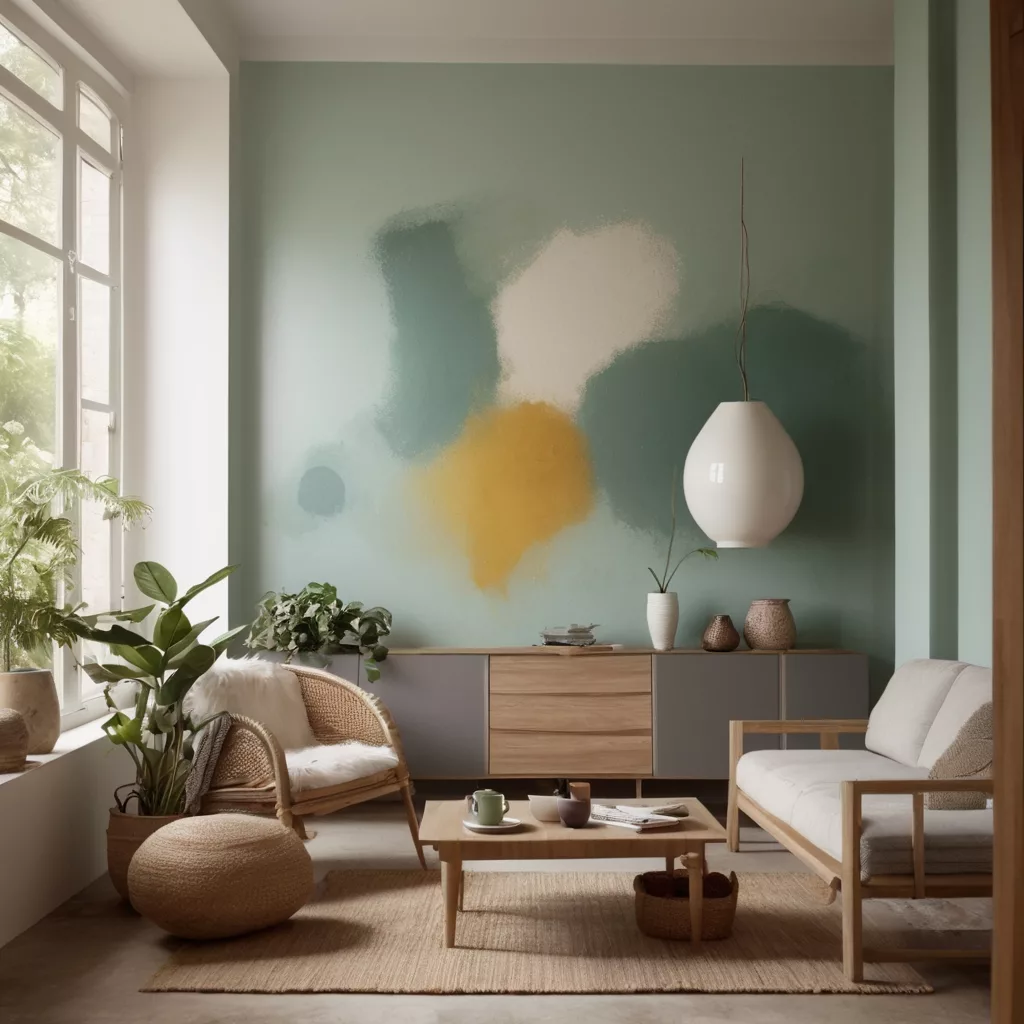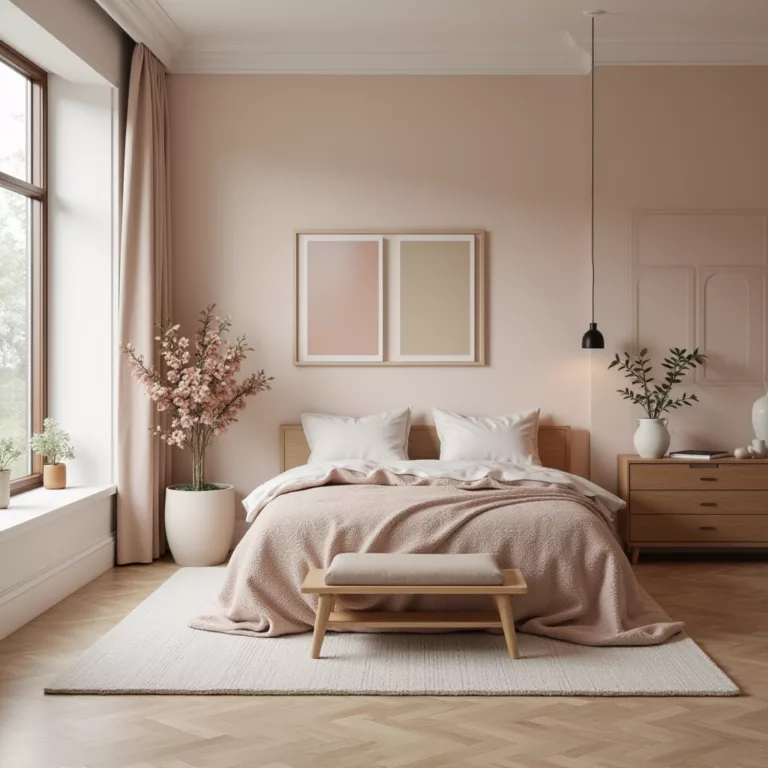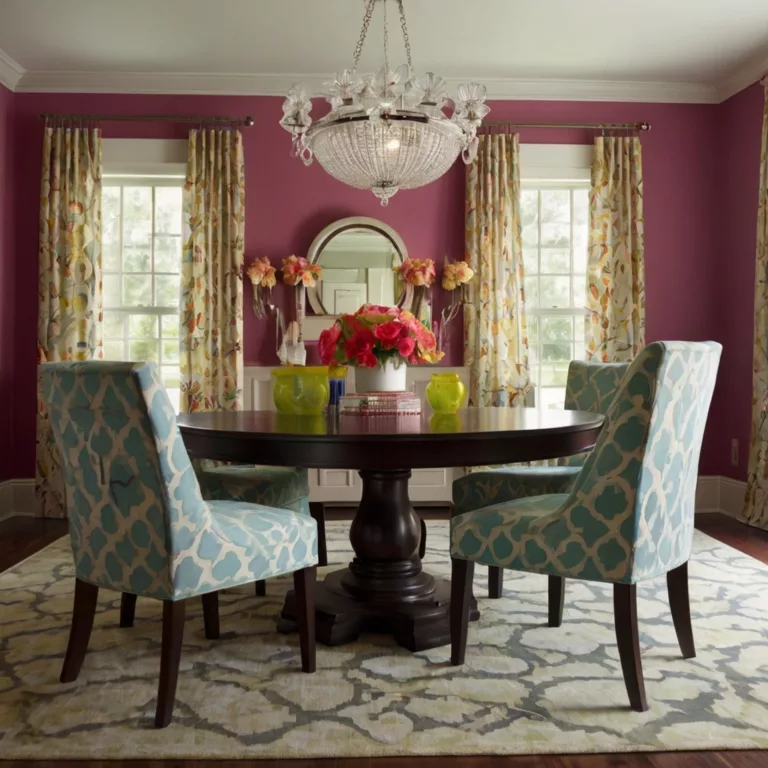Choosing Home Paints for Humid Environments:
The Critical Relationship Between Paint and Humidity
Selecting appropriate choosing home paints for humid environments represents one of the most crucial decisions homeowners face when improving or maintaining properties in moisture-rich locations. From coastal homes battling saltwater exposure to bathroom interiors facing daily steam challenges, the interaction between paint and humidity directly impacts not only aesthetic longevity but also structural health and indoor air quality. Making informed decisions about choosing home paints for humid environments can mean the difference between a lasting, beautiful finish and frustrating, repeated failures requiring constant maintenance.
Humid conditions present unique challenges that standard paint formulations often cannot adequately address. When moisture permeates or condenses on painted surfaces, it creates ideal conditions for mold and mildew growth, causes adhesion failures, and accelerates deterioration of both the paint film and underlying substrates. Understanding the science behind choosing home paints for humid environments equips homeowners with essential knowledge to protect their investment while maintaining attractive living spaces despite challenging moisture conditions.
This comprehensive guide explores the technical considerations, creative solutions, and practical applications essential for choosing home paints for humid environments successfully. Whether addressing high-humidity interior spaces like bathrooms and kitchens, or exterior surfaces in tropical or coastal locations, these expert insights will help you navigate the complexities of paint selection and application for optimal performance in moisture-challenged environments.
Understanding Humidity’s Impact on Paint Performance
Before selecting specific products, it’s essential to understand the fundamental challenges that necessitate careful choosing home paints for humid environments.
How Moisture Compromises Standard Paint Formulations
Standard paint formulations face multiple failure mechanisms in high-humidity settings:
- Water vapor penetration disrupts adhesion between paint and substrate
- Hydrostatic pressure forces moisture through painted surfaces from behind
- Condensation creates persistent surface moisture conducive to biological growth
- Expansion and contraction from moisture cycling stresses paint film integrity
- Chemical breakdown of binders accelerates in consistently moist conditions
These challenges make choosing home paints for humid environments a technical exercise requiring specific performance characteristics rather than simply an aesthetic decision. According to research published in the Journal of Coatings Technology and Research, conventional latex paints in high-humidity environments can experience up to 40% shorter lifespans compared to identical applications in moderate humidity conditions.
The Science of Humidity-Related Paint Failures
Understanding the chemical mechanisms behind humidity-related failures provides clarity when choosing home paints for humid environments. Paint chemist Dr. Elena Rodriguez explains: “Paint film integrity depends on proper coalescence of binder particles during curing. Excessive humidity during application can trap moisture within the film, while post-application humidity can prevent complete crosslinking in certain formulations.”
Common scientific failure mechanisms include:
- Saponification: In alkaline conditions with moisture, certain binders undergo hydrolysis
- Osmotic blistering: Water-soluble contaminants draw moisture through semi-permeable paint films
- Biological colonization: Mold and mildew consume organic components in standard paints
- Surfactant leaching: Water-soluble components migrate to the surface, creating sticky residues
For those choosing home paints for humid environments, understanding these mechanisms helps evaluate manufacturer claims against scientific reality. Environmental engineer Thomas Wilson notes, “Formulators combat these specific failure modes through careful ingredient selection and specialized additives that directly address humidity-related vulnerabilities.”
Key Properties for Humid-Environment Paint Success
Successful choosing home paints for humid environments requires focusing on specific performance characteristics designed to combat moisture-related challenges.
Moisture Resistance vs. Moisture Permeability
A critical distinction when choosing home paints for humid environments involves understanding the difference between moisture resistance and appropriate permeability:
- Moisture resistance prevents water penetration from the exterior
- Vapor permeability allows trapped moisture to escape rather than accumulating
Building scientist Maria Chen explains: “The ideal paint for humid environments creates a semi-permeable membrane—resistant to liquid water penetration while allowing water vapor to migrate through at a controlled rate. This prevents the ‘moisture sandwich’ effect that accelerates substrate deterioration.”
The most effective approach to choosing home paints for humid environments typically involves creating this balanced performance profile rather than attempting complete moisture blockage, which often leads to more severe failures when inevitable moisture infiltration occurs.
Mold and Mildew Inhibiting Technologies
Biological growth represents one of the most visible and health-concerning consequences of poor choosing home paints for humid environments. Modern formulations incorporate several approaches to combat these issues:
- Biocidal additives that actively inhibit microbial colonization
- Elevated pH formulations that create inhospitable conditions for common molds
- Reduced organic nutrient content limiting food sources for microorganisms
- Hydrophobic surface properties minimizing moisture film duration
Research published in the International Biodeterioration & Biodegradation Journal indicates that specialized antimicrobial paints can reduce mold growth by up to 95% compared to standard formulations in identical high-humidity conditions. When choosing home paints for humid environments, look for specific mildewcide content declarations and performance testing rather than vague marketing claims.
Adhesion Properties for Humid Applications
Moisture’s ability to compromise adhesion makes bond strength particularly crucial when choosing home paints for humid environments. Superior humid-environment formulations feature:
- Enhanced mechanical adhesion through specialized polymer structures
- Chemical bonding with common substrate materials
- Hydrophobic adhesion mechanisms that perform even on damp surfaces
- Elastic properties accommodating substrate movement from moisture cycling
Paint technology specialist Dr. James Henderson emphasizes: “Adhesion under challenging conditions separates truly premium moisture-resistant formulations from standard products with moisture-resistant marketing. This property alone justifies higher investment when choosing home paints for humid environments.”
Interior Applications: Room-Specific Strategies
Different interior spaces present unique challenges requiring specialized approaches to choosing home paints for humid environments.
Bathroom Paint Solutions Beyond Basic Water Resistance
Bathrooms represent perhaps the most challenging interior environment for paint performance due to:
- Extreme humidity cycling from showers and baths
- Direct water exposure from splashing
- Cleaning chemical exposure degrading paint films
- Limited ventilation in many architectural layouts
Successful choosing home paints for humid environments like bathrooms requires products specifically engineered for these conditions. According to Home Innovation Research Labs, bathrooms experience humidity levels between 70-100% during typical use, falling into the “extremely high” humidity classification that demands specialized coating performance.
Effective bathroom paint solutions should include:
- Kitchen and bath-specific formulations with enhanced moisture resistance
- Semi-gloss or gloss finishes reducing water adhesion and improving cleanability
- Fast-drying properties minimizing vulnerability during curing
- Chemical resistance to cleaning products and personal care ingredients
Designer Sarah Matthews recommends: “When choosing home paints for humid environments like bathrooms, consider sacrificing a small degree of aesthetic perfection for performance characteristics. Slightly higher sheen levels dramatically improve longevity in these challenging spaces.”
Kitchen Paint Considerations for Steam and Grease Exposure
Kitchens present compound challenges requiring careful choosing home paints for humid environments with additional performance requirements:
- Steam exposure from cooking activities
- Grease and oil contamination affecting adhesion
- Food acid exposure potentially degrading paint films
- Frequent cleaning creating mechanical wear
Effective kitchen paints balance moisture resistance with these additional demands through:
- Enhanced cleanability without film degradation
- Grease-resistant surfaces minimizing staining and adhesion issues
- Chemical resistance to food acids and cleaning agents
- Stain-blocking properties preventing bleed-through from common kitchen contaminants
Professional painter Michael Rodriguez advises: “When choosing home paints for humid environments like kitchens, prioritize products specifically tested for kitchen exposure rather than general-purpose ‘moisture-resistant’ claims. The combination of humidity, heat, and cooking residues creates unique chemical challenges.”
Basement and Below-Grade Applications
Below-grade spaces present unique challenges when choosing home paints for humid environments due to potential moisture migration through foundation materials. Effective basement paint strategies include:
- Masonry-specific formulations designed for alkaline substrates
- Waterproofing paint systems for severe moisture conditions
- Vapor barrier properties appropriate to local climate conditions
- Enhanced flexibility accommodating structural movement
Building envelope specialist Thomas Chen notes: “Basement paint selection requires understanding your specific moisture sources. Surface condensation requires different solutions than hydrostatic pressure or capillary water movement when choosing home paints for humid environments below grade.”
For particularly challenging basement conditions, consider:
- Epoxy-modified waterproofing systems providing superior moisture resistance
- Crystalline waterproofing additives for masonry surfaces
- Two-component systems offering enhanced chemical resistance
- Elastomeric options accommodating foundation movement and cracking
Exterior Applications in High-Humidity Climates
Exterior surfaces in humid climates face compound challenges requiring specialized choosing home paints for humid environments.
Coastal Property Special Considerations
Coastal environments represent perhaps the most demanding conditions for exterior paint performance, requiring specialized choosing home paints for humid environments with additional salt resistance:
- Salt spray exposure accelerating corrosion and degradation
- Intense UV radiation breaking down paint binders
- Wind-driven rain penetrating microscopic film defects
- Sand abrasion gradually eroding protective films
According to research from the Durability Lab at Florida Atlantic University, coastal properties expose paint to salt crystallization cycles that can reduce paint lifespan by up to 60% compared to identical formulations in non-coastal humid environments. This makes choosing home paints for humid environments particularly critical for oceanfront properties.
Effective coastal paint systems typically feature:
- Enhanced UV stabilizers preventing premature degradation
- Salt-resistant additives minimizing crystal formation within paint films
- Superior elastic properties accommodating extreme expansion/contraction
- Increased film build providing enhanced protection
Coastal property specialist Amanda Richardson recommends: “When choosing home paints for humid environments on coastal properties, expect to repaint more frequently than inland locations regardless of paint quality. However, premium marine-grade formulations can significantly extend maintenance intervals despite harsh conditions.”
Tropical and Subtropical Environmental Challenges
Tropical climates combine persistent high humidity with additional challenges requiring specialized choosing home paints for humid environments:
- Fungal and algal pressure far exceeding temperate regions
- Year-round high humidity with minimal drying periods
- Intense rainfall exposure testing water-shedding properties
- Accelerated biological activity in surrounding environments
Effective tropical paint solutions include:
- Enhanced fungicides and algaecides at higher concentrations
- Quick-drying formulations minimizing vulnerable curing periods
- Superior flow properties ensuring complete coverage despite rapid evaporation
- Enhanced UV resistance for intense sun exposure
Environmental scientist Dr. Lisa Nguyen explains: “Tropical environments require choosing home paints for humid environments with enhanced biocide packages that would be unnecessary in drier climates. The combination of warmth and persistent moisture creates exponentially higher biological pressure on coating systems.”
Choosing Paint for Seasonal Humidity Fluctuations
Regions with dramatic seasonal humidity changes present unique challenges when choosing home paints for humid environments:
- Moisture cycling stressing film flexibility
- Freeze-thaw conditions in cold-winter humid regions
- Seasonal biological pressure requiring balanced protection
- Solar-driven moisture movement through building materials
Paint chemist Robert Chen recommends: “Regions experiencing both humid summers and dry seasons benefit from choosing home paints for humid environments with balanced performance characteristics rather than extreme specialization. Look for all-season formulations with flexibility as a primary attribute.”
Technical Paint Categories for Moisture Resistance
Different resin technologies offer distinct advantages when choosing home paints for humid environments.
100% Acrylic Formulations
Among water-based options, 100% acrylic formulations typically offer superior performance when choosing home paints for humid environments:
- Superior water resistance once fully cured
- Enhanced adhesion properties on multiple substrates
- Better flexibility reducing cracking during moisture movement
- Improved breathability allowing vapor transmission
The Paint Quality Institute research demonstrates that 100% acrylic binders outperform vinyl-acrylic and PVA formulations in humidity resistance by up to 40% in accelerated testing. When choosing home paints for humid environments, look specifically for “100% acrylic” rather than simply “acrylic” which may indicate lower-performing blended formulations.
Epoxy-Modified Systems
For extremely challenging conditions, epoxy-modified systems offer enhanced performance capabilities when choosing home paints for humid environments:
- Superior chemical resistance protecting against contaminants
- Exceptional adhesion even under challenging conditions
- Excellent hardness resisting physical damage
- Extended durability justifying higher initial investment
These systems typically require two-component mixing and have application challenges, making them suitable for specific high-performance needs rather than general-purpose solutions when choosing home paints for humid environments.
Silicone and Silicate-Based Alternatives
Emerging technologies based on silicone and silicate chemistry offer promising alternatives when choosing home paints for humid environments:
- Extremely hydrophobic surfaces actively repelling moisture
- Mineral-based stability resisting degradation
- High vapor permeability preventing moisture entrapment
- Inherent mold resistance due to inorganic composition
Building scientist Martin Weber notes: “Silicate-based systems create chemical bonds with mineral substrates rather than simply adhering to the surface. This fundamental difference makes them particularly valuable when choosing home paints for humid environments for masonry applications where moisture migration is inevitable.”
Application Techniques for Humid Environments
Beyond product selection, application methodology significantly impacts success when choosing home paints for humid environments.
Optimal Application Conditions and Timing
Strategic timing dramatically affects performance when applying your chosen home paints for humid environments:
- Monitor weather forecasts for optimal humidity windows
- Follow temperature-humidity guidelines precisely
- Schedule application during falling humidity rather than rising trends
- Allow maximum cure time before moisture exposure
Professional painter Katherine Wong advises: “After choosing home paints for humid environments, pay equal attention to application timing. Morning application in humid climates often proves problematic as rising temperatures drive moisture into substrates and through fresh paint films.”
Substrate Preparation Essentials
Preparation becomes even more critical when working with home paints for humid environments:
- Thoroughly remove existing mold/mildew before application
- Address moisture sources rather than simply painting over symptoms
- Allow complete substrate drying before application
- Apply appropriate moisture-resistant primers matched to topcoat systems
Restoration specialist Thomas Klein emphasizes: “The most important step after choosing home paints for humid environments is proper substrate preparation. The most advanced moisture-resistant paint cannot overcome application over damp surfaces or existing biological contamination.”
Multi-Coat Systems for Enhanced Protection
Strategic layering enhances performance when applying chosen home paints for humid environments:
- Specialized primers creating foundation adhesion
- Multiple topcoats building adequate film thickness
- Appropriate dry time between coats ensuring proper coalescence
- Edge and corner reinforcement protecting vulnerable areas
Building envelope consultant Sarah Martinez recommends: “After choosing home paints for humid environments, resist the temptation to rush application or minimize recommended coats. Each layer plays a crucial role in the system’s overall moisture resistance, particularly at edges and seams where failures typically begin.”
Creative Design Solutions for Humid Spaces
Beyond technical performance, aesthetic considerations remain important when choosing home paints for humid environments.
Bathroom Color Strategies That Conceal Moisture Issues
Strategic color selection can complement the technical performance of your chosen home paints for humid environments:
- Mid-tone colors showing less visible condensation than extremes
- Slightly warmer hues creating perception of dryness
- Strategic sheen variation directing attention away from problem areas
- Mottled or textured finishes disguising potential uneven moisture patterns
Designer Rebecca Thompson notes: “After choosing home paints for humid environments based on technical merit, consider color psychology in moisture-prone spaces. Certain colors psychologically reinforce feelings of dampness, while others create perceptions of dryness regardless of actual conditions.”
Decorative Techniques Compatible with Moisture-Resistant Formulations
Many decorative finishes can be adapted to work with high-performance home paints for humid environments:
- Metallic accent finishes sealed with moisture-resistant clear coats
- Color washing techniques using mildew-resistant formulations
- Textured applications providing additional film build in vulnerable areas
- Stenciling and detail work with compatible coating systems
Decorative painter Michael Chen explains: “After choosing home paints for humid environments for base applications, many decorative techniques remain viable with appropriate modifications. The key lies in maintaining system integrity while adding decorative elements using compatible components.”
Creating Visual Interest With Mixed Finish Levels
Strategic sheen variation adds design interest while enhancing performance of chosen home paints for humid environments:
- Higher-sheen borders protecting vulnerable edges and transitions
- Strategic gloss accents highlighting architectural features
- Sheen gradients creating subtle visual movement
- Functional sheen allocation based on water exposure patterns
Interior designer Elena Rodriguez recommends: “After choosing home paints for humid environments with necessary performance characteristics, use thoughtful sheen placement to create visual interest while reinforcing moisture protection where most needed. This functional approach to design thinking solves problems while enhancing aesthetics.”
Special Applications and Problem-Solving
Some situations require specialized approaches beyond standard choosing home paints for humid environments.
Solutions for Persistent Condensation Problems
Chronic condensation requires specialized strategies beyond standard choosing home paints for humid environments:
- Anti-condensation additive packages raising surface temperature
- Thermal insulating paint formulations reducing dew point issues
- Hygroscopic formulations absorbing and releasing moisture
- Combined paint and ventilation strategies addressing root causes
Building physicist Dr. Sarah Thompson explains: “Persistent condensation indicates system issues beyond paint selection. While choosing home paints for humid environments with anti-condensation properties helps, addressing ventilation, insulation, and air barriers provides comprehensive solutions.”
Remediation Approaches for Existing Mold Problems
When addressing spaces with established mold issues, specialized choosing home paints for humid environments follows remediation:
- EPA-registered mildewcidal preparations before painting
- Stain-blocking primer technologies preventing bleed-through
- Encapsulation systems for severe historical problems
- Moisture-management system approaches rather than simple repainting
Environmental remediation specialist Thomas Gonzalez emphasizes: “After proper remediation and before choosing home paints for humid environments with mold history, verify the space has been properly decontaminated and moisture sources addressed. Paint alone cannot solve active mold situations regardless of antimicrobial claims.”
Addressing Specific Substrate Challenges in Humid Conditions
Different substrates present unique challenges requiring specialized choosing home paints for humid environments:
Masonry and Concrete
- Alkalinity resistance preventing saponification
- Breathability allowing moisture migration
- Efflorescence resistance preventing mineral deposits
- Carbonation protection maintaining structural integrity
Wood and Fiber Substrates
- Enhanced adhesion accommodating dimensional changes
- Grain-crack resistance during seasonal movement
- Tannin-blocking preventing extractive staining
- Edge sealing preventing moisture wicking
Metal Surfaces
- Anti-corrosive properties preventing oxidation
- Temperature tolerance preventing thermal failures
- Galvanic compatibility with substrate metals
- Flexibility accommodating thermal expansion
Sustainability Considerations
Environmental responsibility increasingly influences choosing home paints for humid environments.
Low-VOC Options for Moisture-Prone Spaces
Traditionally, high-performance moisture-resistant coatings required substantial solvent content, but modern formulations provide low-VOC alternatives when choosing home paints for humid environments:
- Water-based epoxy technologies reducing solvent emissions
- Advanced latex formulations with enhanced moisture resistance
- Silicone-modified water-based systems offering hydrophobic performance
- Hybrid technologies balancing performance and environmental impact
Environmental engineer Maria Garcia notes: “The historical performance gap between high-VOC and low-VOC formulations has narrowed significantly. Today’s environmentally responsible options provide comparable performance when choosing home paints for humid environments for most typical applications.”
Natural and Alternative Formulations
For environmentally conscious consumers, several alternative approaches exist when choosing home paints for humid environments:
- Milk paint with enhanced additives for moderate humidity conditions
- Lime-based coating systems offering inherent mold resistance
- Clay-based paints providing humidity buffering properties
- Tung oil and natural resin systems for wood protection
While these alternatives typically cannot match the extreme performance of synthetic systems in severe conditions, they offer viable options when choosing home paints for humid environments with moderate challenges while minimizing environmental impact.
Lifecycle Considerations Beyond Application
Complete environmental assessment considers entire lifecycle impacts when choosing home paints for humid environments:
- Longevity reducing replacement frequency and resource consumption
- Maintenance requirements impacting ongoing environmental footprint
- End-of-life disposal considerations and recyclability
- Embodied carbon comparison across different systems
Sustainability consultant Dr. Thomas Chen explains: “The most sustainable approach to choosing home paints for humid environments often involves selecting higher-performance options with longer service lives rather than natural alternatives requiring frequent replacement. Total lifecycle assessment frequently favors durability over initial composition.”
Cost-Benefit Analysis and Investment Considerations
Economic factors inevitably influence choosing home paints for humid environments.
Performance-Price Relationships in Humidity-Resistant Formulations
Understanding value propositions assists in choosing home paints for humid environments within budget constraints:
- Entry-level moisture-resistant formulations typically add 10-20% to standard paint costs
- Mid-range specialized products generally command 30-50% premiums
- Premium moisture-specific systems may double or triple standard paint investments
- Commercial-grade moisture solutions represent the highest price point for residential applications
Cost analyst Jennifer Williams notes: “When choosing home paints for humid environments, expected service life dramatically impacts true cost. Premium moisture-resistant formulations averaging 7-10 years of performance versus 2-3 years for standard paints in high-humidity conditions often represent superior value despite higher initial investment.”
Long-Term Value and Maintenance Reduction
Comprehensive economic analysis considers maintenance expenses when choosing home paints for humid environments:
- Preparation labor for repainting often exceeding material costs
- Potential structural damage from moisture intrusion if paint fails
- Occupant displacement during remediation creating indirect costs
- Property value impacts from visible moisture problems
Real estate appraiser Robert Martinez observes: “Properties demonstrating proactive moisture management through appropriate choosing home paints for humid environments typically maintain value more effectively than those showing visible humidity damage. The investment in quality moisture-resistant paint systems represents property value protection beyond simple aesthetics.”
DIY vs. Professional Application Cost Factors
Application methodology affects cost-value equations when choosing home paints for humid environments:
- Technical complexity of high-performance systems sometimes requiring professional skills
- Proper preparation requirements often being labor-intensive
- Application condition management sometimes requiring specialized equipment
- Warranty considerations often requiring professional application
Contractor Maria Rodriguez advises: “After choosing home paints for humid environments, carefully evaluate whether the technical requirements match your DIY capabilities. Some high-performance moisture-resistant systems require application precision that justifies professional installation despite additional labor costs.”
Emerging Technologies and Future Developments
The field of moisture-resistant coatings continues evolving, influencing future choosing home paints for humid environments.
Self-Cleaning Hydrophobic Technologies
Emerging formulations incorporate advanced water-repellent properties assisting choosing home paints for humid environments with enhanced performance:
- Lotus effect technologies mimicking natural ultra-hydrophobic surfaces
- Nanostructured coatings creating microscopic water-repelling textures
- Silicone-modified polymers with extreme water contact angles
- Photocatalytic surfaces breaking down organic contaminants
These technologies reduce moisture dwell time on surfaces, minimizing biological growth opportunity and extending coating lifespan. Research scientist Dr. Thomas Wong predicts: “Within five years, mainstream consumer options will incorporate these advanced technologies, transforming choosing home paints for humid environments into selecting self-maintaining systems rather than simply moisture-resistant coatings.”
Smart Coatings with Humidity Response
Adaptive coating systems are emerging that respond dynamically to environmental moisture:
- Humidity-triggered biocide release activating protection when needed
- Moisture-activated ventilation properties enhancing breathability during wet conditions
- Color-change moisture indicators providing visual warning of excessive humidity
- Variable-permeability systems adjusting transmission rates to current conditions
These systems represent the next generation of choosing home paints for humid environments, promising enhanced performance through responsive rather than static protection.
Integration with Home Climate Control Systems
Future comprehensive moisture management will integrate coating performance with active systems:
- Smart-home humidity monitoring informing maintenance scheduling
- Ventilation systems coordinated with coating performance parameters
- Predictive modeling preventing condensation events
- Active mold prevention through coordinated systems
This systems approach will transform choosing home paints for humid environments from isolated product decisions to integrated moisture management strategies.
Professional Guidance and Resource Selection
Navigating the complexities of choosing home paints for humid environments often benefits from specialized expertise.
Working with Humidity Specialists in Different Climate Zones
Regional expertise provides valuable insights when choosing home paints for humid environments for specific locations:
- Coastal specialists understanding salt exposure challenges
- Tropical environment experts familiar with extreme biological pressure
- Cold-climate humidity specialists addressing freeze-thaw considerations
- Regional microclimate experts providing localized recommendations
Environmental building consultant Elena Martinez advises: “Local expertise often proves more valuable than general recommendations when choosing home paints for humid environments. Regional professionals have observed actual performance in your specific conditions rather than relying on laboratory testing alone.”
Manufacturer Support and Warranty Considerations
Major paint manufacturers offer specialized support for choosing home paints for humid environments:
- Technical representatives providing site-specific recommendations
- System warranties covering compatible components
- Moisture assessment services evaluating specific challenges
- Certified contractor networks ensuring proper application
When evaluating warranty protection, carefully examine:
- Humidity limitation clauses potentially voiding coverage
- Application condition specifications that must be documented
- Required maintenance procedures preserving warranty validity
- Exclusions for specific environments like coastal or tropical conditions
Testing and Verification Protocols
For critical applications, scientific verification assists choosing home paints for humid environments:
- ASTM D4585 condensation testing evaluating moisture resistance
- ASTM D3273/D3274 measuring mold and mildew resistance
- ASTM D1653 determining water vapor transmission properties
- ASTM B117 assessing salt spray resistance for coastal applications
While most homeowners won’t commission independent testing, understanding these standards helps evaluate manufacturer claims when choosing home paints for humid environments for critical applications.
Conclusion: Informed Selection for Lasting Performance
Choosing home paints for humid environments requires balancing technical performance, aesthetic considerations, environmental responsibility, and economic factors. By understanding the specific challenges presented by your unique moisture conditions, you can make informed decisions that protect your property while creating beautiful living spaces even in challenging humid environments.
Whether addressing interior spaces with periodic moisture exposure or exterior surfaces in consistently humid climates, the principles outlined in this guide provide a framework for successful choosing home paints for humid environments. Remember that paint selection represents not merely a decorative decision but a critical building envelope component protecting structural integrity and occupant health in moisture-challenged conditions.
By combining the technical insights, creative approaches, and practical considerations presented here, you can confidently navigate the complex process of choosing home paints for humid environments for your specific situation, achieving both beautiful and durable results despite challenging moisture conditions.
Additional Resources for Humid Environment Paint Selection
For continued exploration of choosing home paints for humid environments, consider these valuable resources:
- Master Painters Institute Technical Guidelines: Detailed specifications for humidity-resistant coating systems
- Building Science Corporation Research Papers: Technical analysis of moisture management strategies
- EPA Guidelines for Mold Remediation: Best practices for addressing mold issues before repainting
- American Society for Testing and Materials: Test methods for evaluating moisture-resistant coating performance
- Association of the Wall and Ceiling Industry Technical Papers: Professional resources on moisture management
Have questions about choosing home paints for humid environments for your specific situation? Share your challenges in the comments below, and our expert community will provide tailored guidance.
This comprehensive guide to choosing home paints for humid environments was last updated on April 22, 2025, and reflects current paint technology and moisture management best practices.







